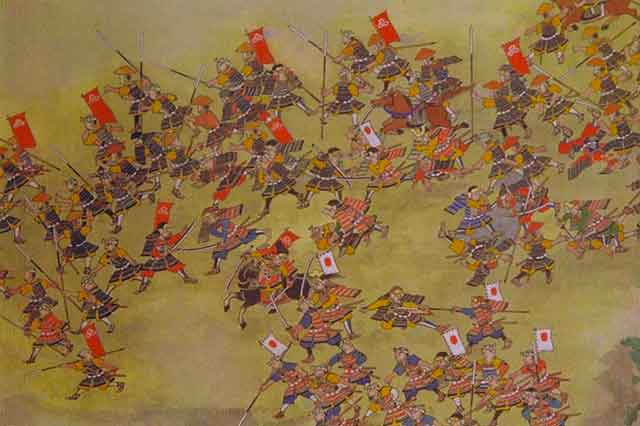
The Battle of Anegawa took place during the Sengoku period in Japan on July 30, 1570, near Lake Biwa in Ōmi Province. It involved the allied forces of Oda Nobunaga and Tokugawa Ieyasu facing off against the combined armies of the Azai and Asakura clans. This historic battle marked the first instance of cooperation between Nobunaga and Ieyasu, ending the unbalanced alliance between the Oda clan and the Azai, and showcasing Nobunaga's innovative use of firearms.
The conflict arose when the Azai and Asakura clans responded to Oda Nobunaga's sieges of their strongholds at Odani and Yokoyama. The engagement is also referred to as the Battle of Nomura by the Oda and Azai, and the Battle of Mitamura by the Asakura clan.
As the Oda-Tokugawa alliance marched towards Odani castle, Azai Nagamasa, the head of the Azai clan, sought help from Echizen, leading to Asakura Yoshikage sending an army to support him. The combined Azai-Asakura force then confronted Nobunaga near the Anegawa, as he had stationed his troops on the southern bank.
The battle commenced the following morning, with the Oda and Azai clashing on the right side, and the Tokugawa and Asakura fighting on the left. The encounter devolved into a fierce melee in the middle of the shallow Ane River. During the battle, Nobunaga entrusted Hashiba Hideyoshi to lead troops in open combat for the first time, while Tokugawa Ieyasu's second division under Honda Tadakatsu and Sakakibara Yasumasa surrounded Asakura Kagetake.
Several notable duels occurred during the conflict, including one between Magara Jurozaemon and his son Magara Jurosaburo (Naomoto), who bravely covered the Asakura army's retreat but were ultimately slain. Another duel involved an Azai samurai named Endo Kizaemon attempting to attack Nobunaga but being thwarted by Takenaka Kyusaku, brother of Takenaka Hanbei.
The Tokugawa forces successfully defeated both the Asakura and Azai forces. After dealing with the Asakura, they turned their attention back to the Azai's right flank. The troops of the Mino Triumvirate, led by Inaba Ittetsu, also joined the battle and helped secure victory for the Oda-Tokugawa alliance.
Historical accounts of the battle are somewhat scarce, and some stories from the Edo period are fictional. However, it is estimated that around 9,000 men were killed, with the Asakura clan alone losing 1,100 samurai. The Oda camp reportedly collected 3,170 enemy heads.
Following the Battle of Anegawa, the Asai and Asakura forces, led by Asakura Kagetake, launched a counterattack in the Battle of Shimosakamoto and managed to defeat an Oda army, causing significant casualties.
The Battle of Anegawa has found its way into popular culture, featuring prominently in various video games, such as the Samurai Warriors series, Warriors Orochi series, Kessen III, and Nioh, where it plays a pivotal role in the main story revolving around the conquests of Oda Nobunaga and his clan.
See also
-
The Siege of Hara Castle

The Shimabara Rebellion of 1637–1638, which culminated in the siege of Hara Castle, was the last major uprising of the Edo period and had serious political consequences.
-
Battle of Tennoji
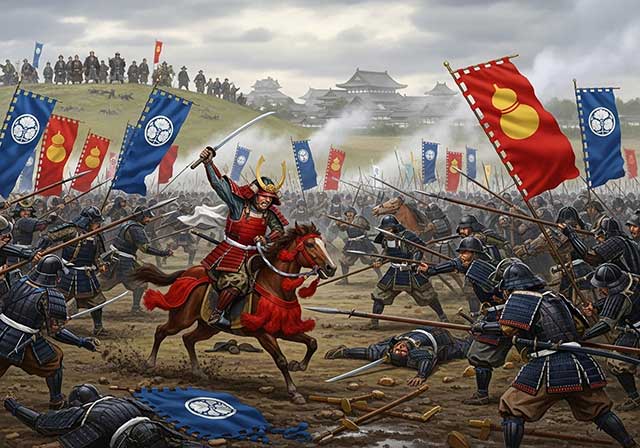
The confrontation between Tokugawa Ieyasu and Toyotomi Hideyori during the “Osaka Winter Campaign” ended with the signing of a peace treaty. On January 22, 1615, the day after the treaty was signed, Ieyasu pretended to disband his army. In reality, this meant that the Shimazu forces withdrew to the nearest port. On the same day, almost the entire Tokugawa army began filling in the outer moat.
-
Siege of Shuri Castle
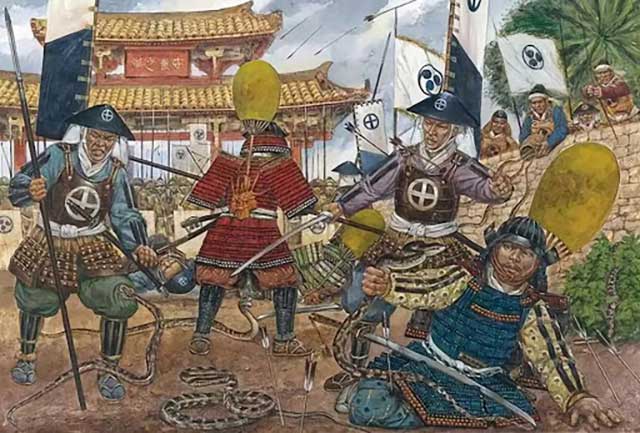
The Ryukyu Kingdom was established in 1429 on Okinawa, the largest island of the Ryukyu (Nansei) archipelago, as a result of the military unification of three rival kingdoms. In the following years, the state's control spread to all the islands of the archipelago.
-
The Siege of Fushimi Castle
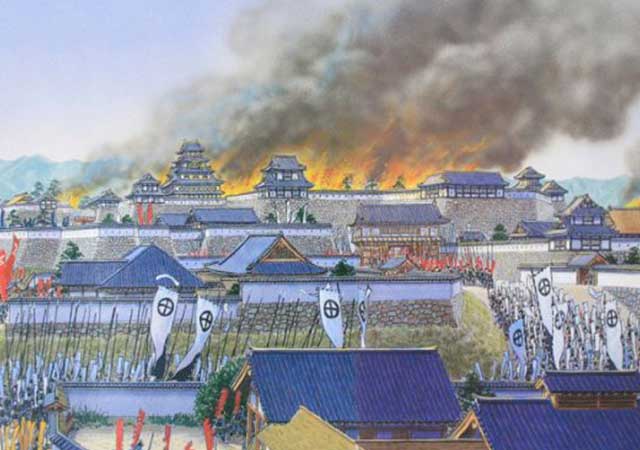
Fushimi can perhaps be considered one of the most “unfortunate” castles of the Sengoku Jidai period. The original castle was built by Toyotomi Hideyoshi in the southeast of Kyoto in 1594 as his residence in the imperial city.
-
The Siege of Otsu Castle
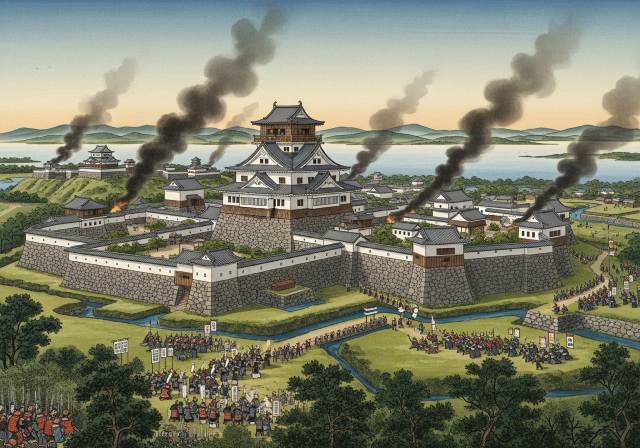
The siege of Otsu Castle was part of the Sekigahara campaign, during which the so-called Eastern Coalition, led by Tokugawa Ieyasu, fought against the Western Coalition, led by Ishida Mitsunari. Otsu Castle was built in 1586 by order of Toyotomi Hideyoshi near the capital Kyoto, on the site of the dismantled Sakamoto Castle. It belonged to the type of “water castles” — mizujō — as one side of it faced Japan's largest lake, Lake Biwa, and it was surrounded by a system of moats filled with lake water, which made the fortress resemble an island.
-
The Siege of Shiroishi Castle
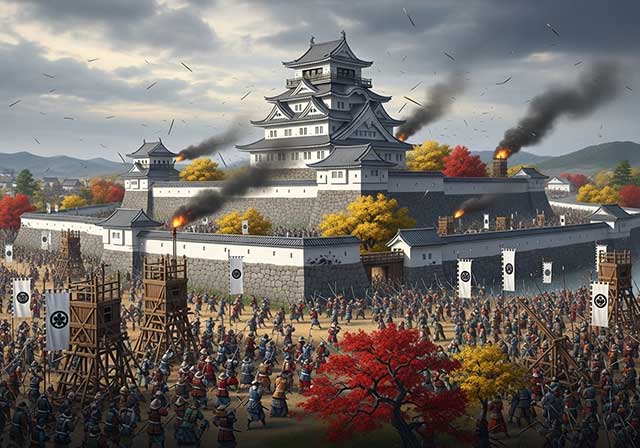
The siege of Shiroishi Castle was part of the Sekigahara campaign and took place several months before the decisive battle of Sekigahara. The daimyo of Aizu Province, Uesugi Kagekatsu, posed a serious threat to Tokugawa Ieyasu's plans to defeat the Western Coalition, and Ieyasu decided to curb his actions with the help of his northern vassals. To this end, he ordered Date Masamune to invade the province of Aizu and capture Shiroishi Castle.
-
The Second Siege of Jinju Castle
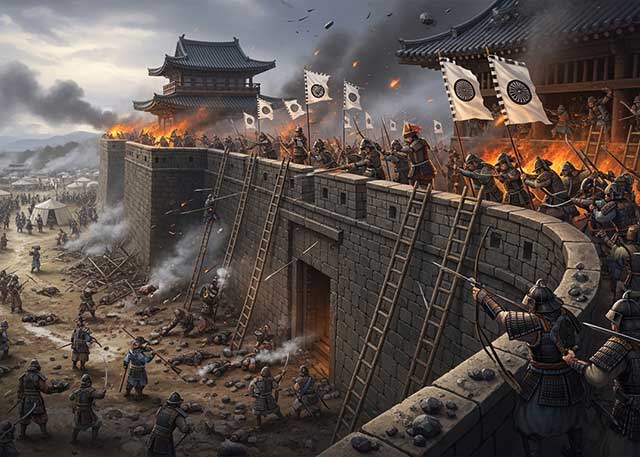
During the two Korean campaigns of the 16th century, the Japanese repeatedly had to capture enemy fortresses and defend occupied or constructed fortifications from the combined Korean and Chinese forces. Among all the operations of that time, the second siege of Jinju Castle is considered the most interesting from the point of view of siege warfare.
-
The Siege of Takamatsu Castle
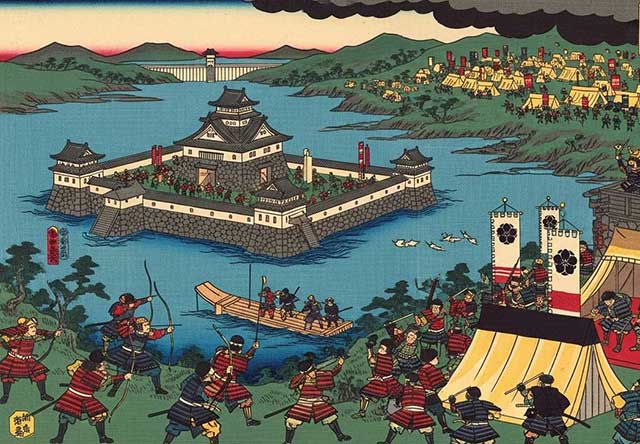
The siege of Takamatsu Castle in Bitchu Province is considered the first mizuzeme, or “water siege,” in Japanese history. Until then, such an original tactic had never been used.

